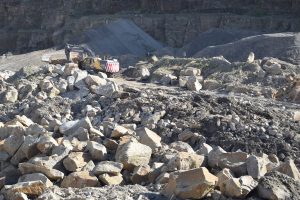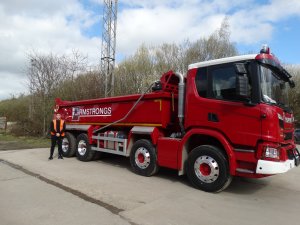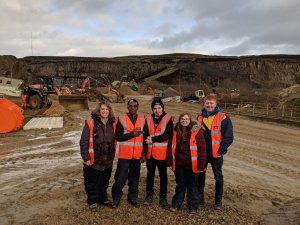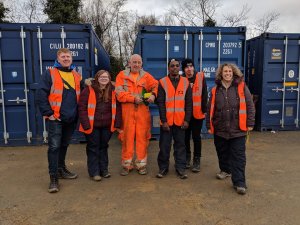What is Exposed Aggregate Concrete: All You Need to Know
Exposed aggregate concrete is a type of concrete finish that has gained popularity for its durability and visual appeal. In this guide, we will explore what exposed aggregate concrete is, its benefits, applications, and maintenance.
What is Exposed Aggregate Concrete?
Exposed aggregate concrete is a decorative concrete finish where the top layer of cement paste is removed to reveal the underlying aggregates. This technique showcases the natural beauty of materials like stone, gravel, or shells, creating a textured and visually appealing surface.
Compared to other concrete finishes, exposed aggregate offers a unique combination of durability and aesthetic charm, making it a popular choice for various applications.
Benefits of Exposed Aggregate Concrete
Aesthetic Appeal
One of the main attractions of exposed aggregate concrete is its visual appeal. The variety of design options available allows for customisation to suit different styles and preferences.
Whether you prefer a subtle, understated look or a bold, eye-catching design, exposed aggregate concrete can be tailored to meet your needs. It is commonly used in decorative applications such as driveways, patios, and walkways, adding an elegant and sophisticated touch to any outdoor space.
Durability and Longevity
Exposed aggregate concrete is renowned for its durability and ability to withstand heavy traffic and harsh weather conditions. Its robust nature makes it an ideal choice for areas that experience frequent use, such as driveways and public walkways.
Additionally, this type of concrete requires minimal maintenance and offers a long lifespan, providing excellent value for money. The exposed aggregates help to resist wear and tear, ensuring that the surface remains intact and visually appealing for many years.
How is Exposed Aggregate Concrete Made?
Selecting Aggregates
The first step in creating exposed aggregate concrete is selecting the right aggregates. Commonly used aggregates include various types of stone, gravel, pebbles, and shells. These materials are sourced from high-quality quarries to ensure consistency and durability.
The choice of aggregate greatly influences the final appearance and texture of the concrete, making it essential to select materials that complement the desired design and finish.
Mixing and Pouring
Once the aggregates are selected, the next step is to mix them with cement and water to create the concrete. The mix ratios are carefully calculated to achieve the right balance of strength and workability.
After mixing, the concrete is poured into molds or onto prepared surfaces. During the initial setting phase, the surface is smoothed and levelled to ensure an even base for the aggregate exposure process.
Exposing the Aggregate
There are several methods for exposing the aggregates in the concrete:
Surface Washing: This method involves spraying the surface with water to wash away the top layer of cement paste, revealing the aggregates beneath.
Chemical Retarders: Applied to the surface after pouring, these chemicals slow down the setting process of the top layer, allowing it to be removed later without affecting the aggregates.
Timing is crucial in both methods to achieve uniform exposure. Proper techniques ensure that the aggregates are evenly distributed and consistently exposed, creating a visually appealing and textured finish.
Curing and Sealing
Proper curing is essential for the strength and durability of exposed aggregate concrete. The curing process involves maintaining the right temperature and moisture levels to allow the concrete to harden properly.
Once cured, the surface is sealed to enhance its appearance and protect it from stains and weather damage. Sealing also helps to lock in the aggregates and prevent them from loosening over time.
Applications of Exposed Aggregate Concrete
Residential Applications
Exposed aggregate concrete is a popular choice for residential projects such as driveways, patios, and garden paths. Its decorative appeal and durability make it ideal for enhancing outdoor spaces.
Homeowners benefit from its low maintenance and long-lasting properties, which add value and aesthetic charm to their properties.
Commercial Applications
In commercial settings, exposed aggregate concrete is used in plazas, public spaces, and building entrances. Its robustness and resistance to heavy foot traffic make it suitable for high-traffic areas.
Businesses benefit from its professional appearance and the ability to create custom designs that align with their brand aesthetics.
Maintenance and Care of Exposed Aggregate Concrete
Regular Cleaning
Maintaining the clean and attractive appearance of exposed aggregate concrete involves regular cleaning. Simple techniques such as sweeping and hosing down the surface can keep it free from dirt and debris. For more thorough cleaning, using a mild dish soap and a soft brush is recommended to avoid damaging the aggregates.
Repairs and Restoration
Over time, exposed aggregate concrete may develop cracks or surface damage. Addressing these issues promptly is important to maintain its integrity and appearance. Techniques for repair include filling cracks with compatible sealants and grinding down any uneven surfaces. Restoration processes may involve re-exposing aggregates and reapplying sealant to bring back the original finish.
Environmental Impact and Sustainability
Armstrongs is committed to eco-friendly quarrying practices. We ensure that our aggregate sourcing minimises environmental impact and supports sustainability. Additionally, we incorporate recycled aggregates into our concrete production, reducing waste and conserving natural resources.
Aggregates from Our Quarries at Armstrongs
We provide top-quality aggregate materials for a range of different applications, direct from our own quarries.
Exposed Aggregate Concrete FAQs
What is exposed aggregate concrete?
Exposed aggregate concrete is a decorative finish where the top layer of cement paste is removed to reveal the underlying aggregates, such as stones or pebbles, creating a textured and visually appealing surface.
How is exposed aggregate concrete made?
It is made by mixing cement, water, and aggregates, then pouring the concrete and allowing it to partially set. The top layer is then removed using techniques like surface washing or applying chemical retarders to expose the aggregates.
What are the benefits of exposed aggregate concrete?
The benefits include aesthetic appeal, durability, resistance to heavy traffic and weather conditions, low maintenance requirements, and a long lifespan.
How do you maintain exposed aggregate concrete?
Maintain it by regularly sweeping and hosing down the surface, using mild detergents for deeper cleaning, and promptly addressing any cracks or damage.
Can exposed aggregate concrete be used indoors?
While it is primarily used outdoors, exposed aggregate concrete can be used indoors for areas like entryways or decorative features, offering a unique and durable flooring option.
How long does exposed aggregate concrete last?
With proper maintenance, exposed aggregate concrete can last for several decades, providing a durable and long-lasting surface for various applications.
What types of aggregates are best for exposed aggregate concrete?
Commonly used aggregates include high-quality stones, gravel, pebbles, and shells, which are chosen for their durability and aesthetic appeal. The selection of aggregates greatly influences the final appearance of the concrete.
Read More







